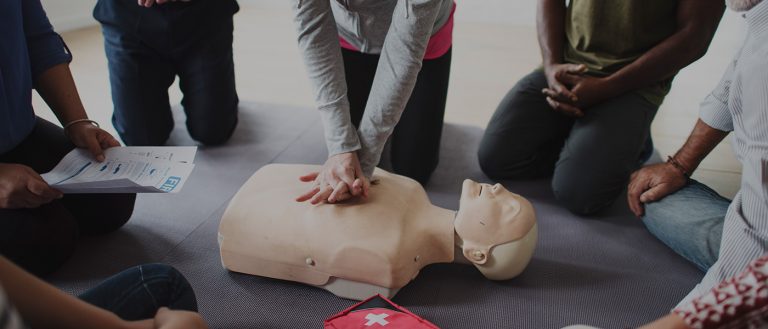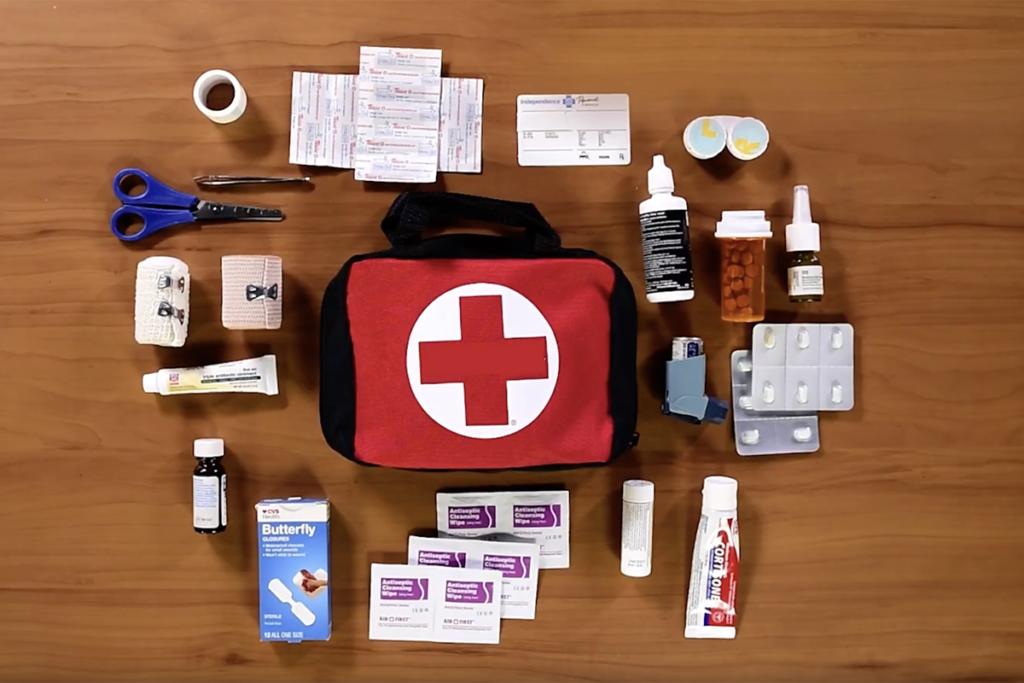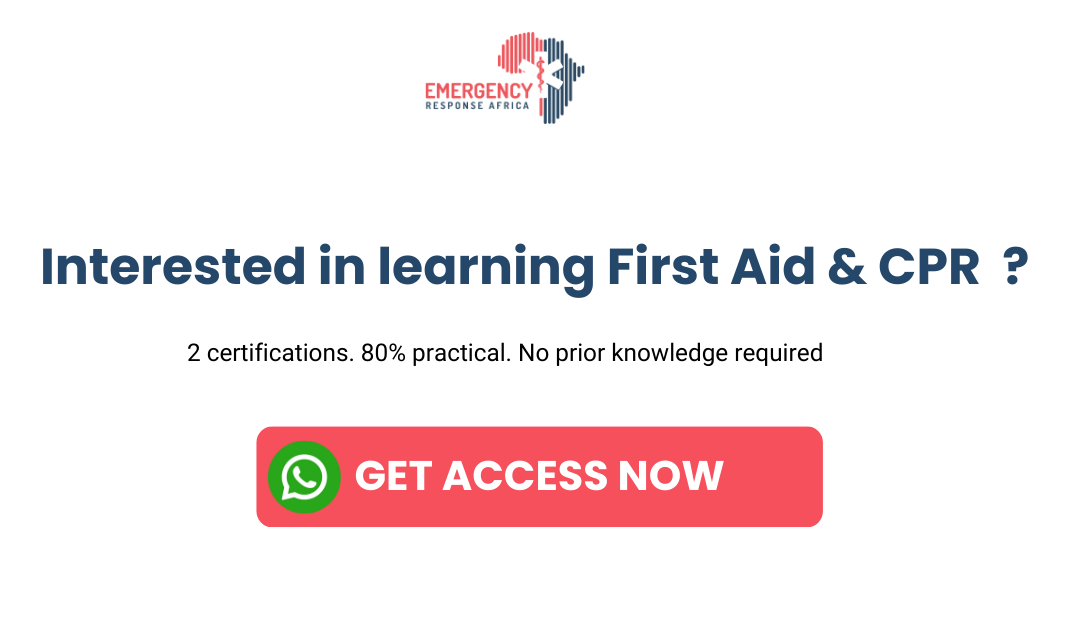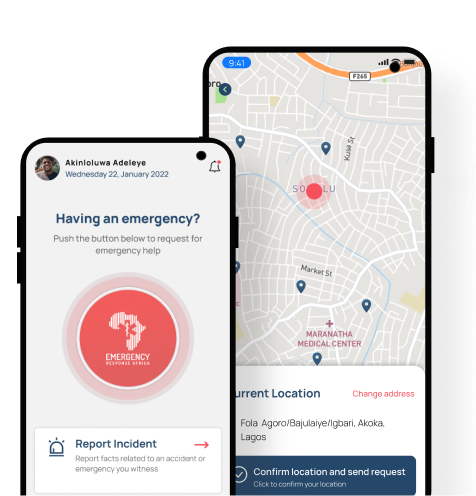Accidents and sudden illnesses can happen in the workplace, instilling fear in workers about their safety, and they may be unable to know how to react in an emergency. Moreover, inadequate knowledge of workplace first aid and the use of first aid equipment can worsen the injury leading to longer recovery time; as such, this increases costs for all parties: employees and employers.
Workers need to understand the importance of workplace first aid to help make everyone feel more secure and prepared against workplace hazards. With that being said, let’s explore how to create an effective first-aid program to ensure a safe workplace for all.
What is Workplace First Aid?
Workplace first aid is immediate care given to an individual injured or suddenly ill while at work. This care can range from cleaning and covering wounds to sophisticated procedures such as CPR on an unconscious person.
First aid works essentially to keep an injury from deteriorating in condition and maintains the stability of the injured until professional medical personnel arrive. Workplace first aid does not replace the physician/doctor’s care, but it can make a big difference between life and death, prevent a condition from worsening, and even assist in recovering more quickly.
Having the appropriate tools, equipment, and trained staff to respond is essential to the health and safety of employees.
Benefits of First Aid at Work
There are several key reasons why having a good first aid program in the workplace is so important and they are:
- To Save Lives: as it is with cardiac arrest, timely first aid will maximize an individual’s survival chance.
- Prevent Injuries from Getting Worse: First aid can prevent minor injuries from becoming very serious. Generally, early treatment of even insignificant cuts prevents infection.
- Fast Recovery: If the injury or illness of the employees is immediately taken care of, they are most likely to recover sooner and get back to work.
- Safety Awareness: First-aid programs make people more aware of safety and encourage them to be more protective towards themselves and others.
- Compliance with Laws: First aid provisions in the workplace are legally demanded by some countries. So, following these rules keeps them away from having any legal cases and prevents fines.
RELATED SERVICES

What Are the Key Elements of a Workplace First Aid Program?
The following elements should be included in a workplace first aid program to be prepared against emergencies.
1. Management and Employee Involvement
Commitment is very important in any good first-aid program both from the management providing leadership through policies and procedures for first aid and the employees taking part in the training to gain knowledge of what to do in an emergency.
2. Workplace Hazard Analysis
Before developing a first aid program, employers should identify the hazards that are likely to be present in their workplace.
Employers can do this by examining the kinds of activities employees perform, the equipment they use, and the chemicals or other materials they may be exposed to. Some common workplace hazards include the following:
- Manual labour (lifting heavy objects)
- Electrical work
- Slips, trips, and falls
- Hazardous chemicals
- Violence in the workplace
Understanding such risks helps in installing a first-aid program that meets particular work needs.
3. Prevention Measures
After identifying risks, prevention of injury and accidents should be done. This may be via the development of better safety measures that could include improved safety equipment and making sure workers are trained in handling hazardous materials. First aid kits should be available and well-stocked.
4. First Aid Training
Some of the main compositions of a first aid program involve proper training of the working employees. Their training should include basic skills in stopping bleeding, burns treatment, and performing CPR.
This will also teach them how to be more confident in assessing the situation, when to seek professional help, and how to act calmly under pressure. Refresher courses should be provided periodically to the employees so that their current skills may be updated accordingly.
RELATED SERVICES
What Are Common Workplace Injuries and How Can First Aid Help?
Workplace injuries may be of different types; some need immediate attention to prevent further harm. The following are a few examples:
- Cuts and Scrapes: The wound should be washed with some clean water and dressed with a bandage. If the extent of the injury is greater, pressure should be applied to it to stop or at least reduce the bleeding and may call for medical attention depending on the case.
- Burns: Small Burns should be immersed in cold running water and the area dressed. In cases of severe burns, medical attention must be sought immediately.
- Sprains and Strains: These can be treated by resting the limb and applying ice to help reduce swelling. In serious cases, which of course depends, it may well require professional medical attention.
- Choking: If a person chokes, then the Heimlich manoeuvre may help him or her. This involves applying quick upward pressure to the abdomen to dislodge the object in his or her airway.
- Cardiac Arrest: During cardiac arrest, CPR can keep a person alive until the ambulance arrives. It consists of chest compressions and rescue breaths that help in restoring the flow of blood with oxygen.
RELATED READING
What Should a Workplace First Aid Kit Include?
Stocking a first-aid kit is not only a means of providing immediate care at work, but this is also a requirement. Even though the contents of the first-aid kit will depend on the workplace, the following are some basic items that should not be missed:
- Bandages and dressings (to cover wounds)
- Antiseptic wipes (to clean injuries)
- Adhesive tape (to secure bandages)
- Scissors and tweezers (to cut bandages or remove small objects like splinters)
- Sterile gloves (to protect the first aider)
- Pain relief medication (for minor aches and pains)
- A first aid guide (to provide instructions in an emergency)
The kit should routinely be checked to make sure it is complete and that none of the items are beyond their expiration dates. The kit must be in an easy-to-access location and should be labelled so that any person seeking it in an emergency would know where it is.
What Are the Legal Requirements for First Aid at Work?
The legislation in most countries insists on business enterprises providing first-aid equipment and personnel to their staff. For example:
- In the United States, OSHA mandates that companies have first aid supplies available and have someone certified to use them for administering first aid when needed.
- In the United Kingdom, the Health and Safety (First-Aid) Regulations 1981, compel employers to provide first aid to their employees.
- While in Australia businesses are obligated to follow the “Model Code of Practice: First Aid in the Workplace.”
But remember that each country has its own rules so businesses should know their local regulations and follow them.
Best Practices for Workplace First Aid
Here are some best practices to establish and maintain a first aid program in businesses to guarantee the safety of all people at work:
- Know Your Most Common Workplace Injuries: Take notice of the types of injuries that occur most often in your workplace, and plan accordingly.
- Keep First Aid Kits Stocked: Inspect your first aid kits on a routine basis to ensure that all supplies are there and up-to-date.
- Train Enough People: Provide a good number of personnel to be trained in first aid depending on the number of employees and prevailing risks. For instance, it is desirable to train one person for every 25-50 employees depending on risk levels.
- Review Regularly: Periodically review your first aid program to ensure it continues to be effective and meets the needs of your workplace. If there are changes in the work environment or processes, update the program accordingly.
- Encourage Employee Participation: Engage your employees in safety discussions and encourage them to participate in first aid training. The more prepared people you have to act in an emergency, the safer your workplace will be.
What is the Difference Between First Aid and First Aid at Work?
First aid can be understood as the general help given to a person who is suddenly injured or falls ill, no matter where in the street, at home, or at work.
First aid at the workplace (FAW) however is associated with workplace injuries and emergencies. First Aid at Work embraces work-related crises and injuries and includes training that enables employees to treat accidents and health issues on the job.
FAW falls under two categories: basic care and specific workplace risks. It allows the employee to know how to treat a person at the workplace until professional help arrives. Both have one objective in common: save lives and prevent the conditions from getting worse.
Conclusion
Workplace first aid is among the most important ways to ensure the safety of employees. It can help save lives, prevent further injury, and even aid in the fast recovery of workers.
A business can secure a safer working environment for all its workers by having the right equipment, training, and schemes. Regular training and awareness of risk are the fundamentals of a good first-aid program.
You can consider upgrading your workplace first aid with Emergency Response Africa (ERA) to help you with your needs for training and support. Stay ready and keep your employees safe with ERA’s professional guidance!




